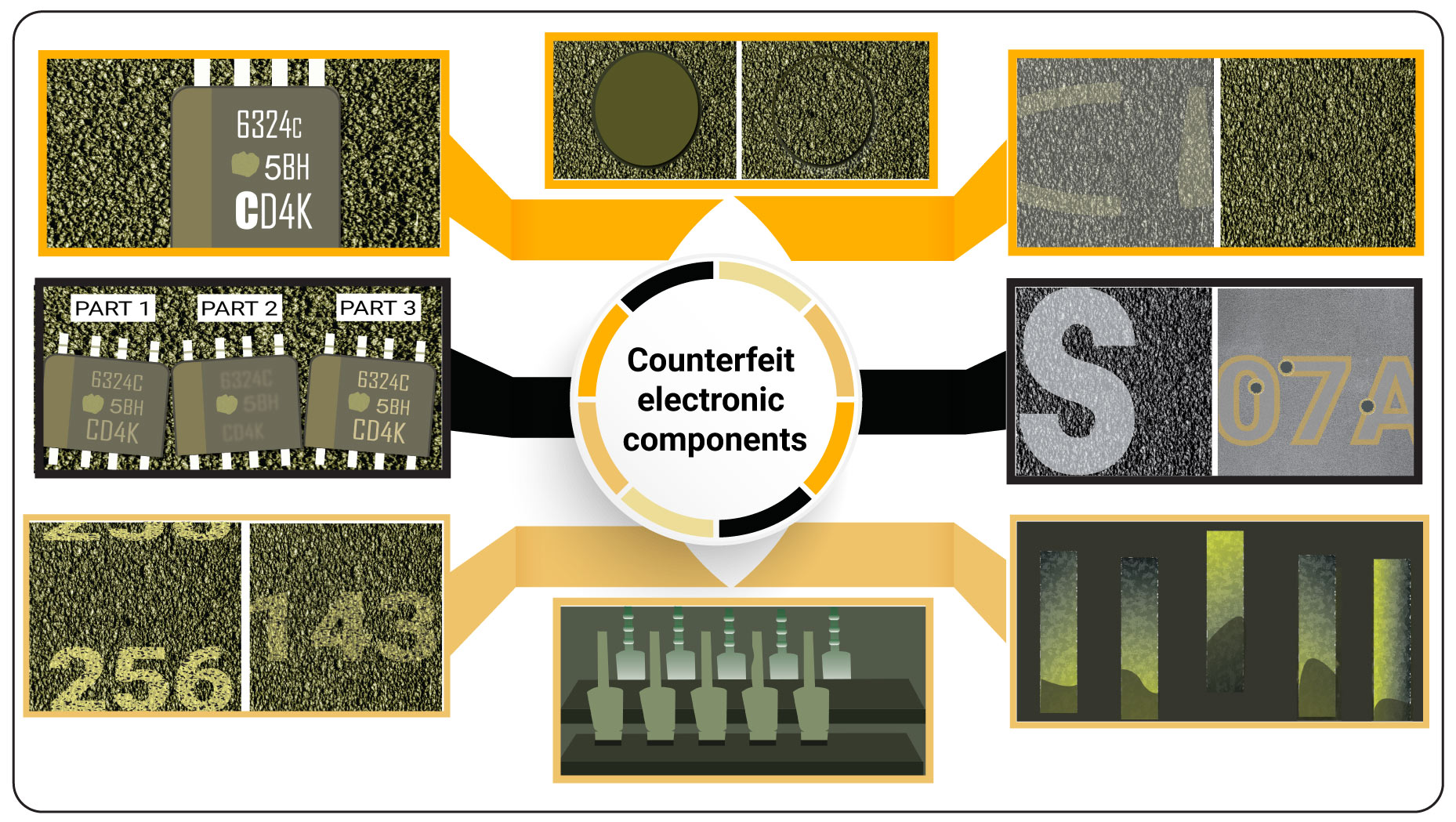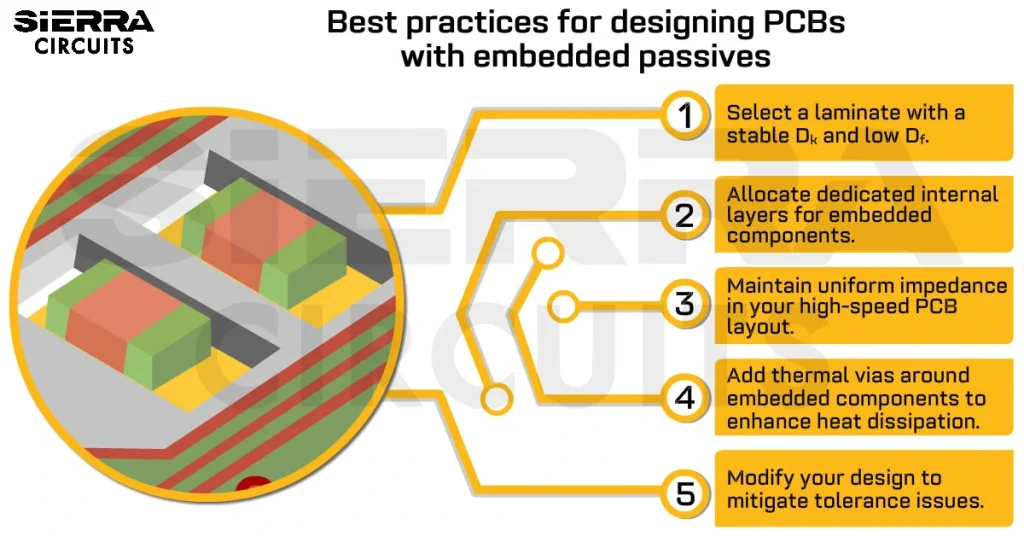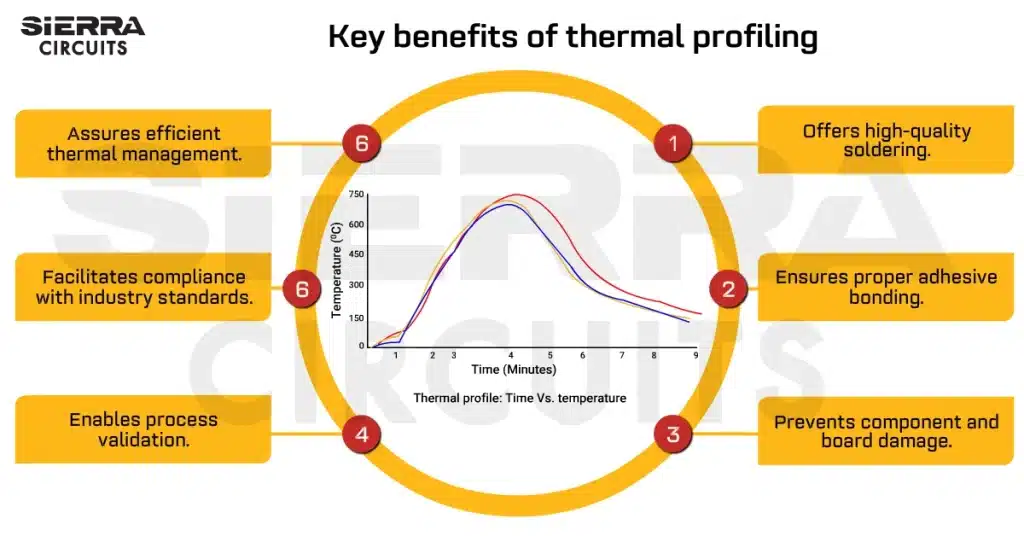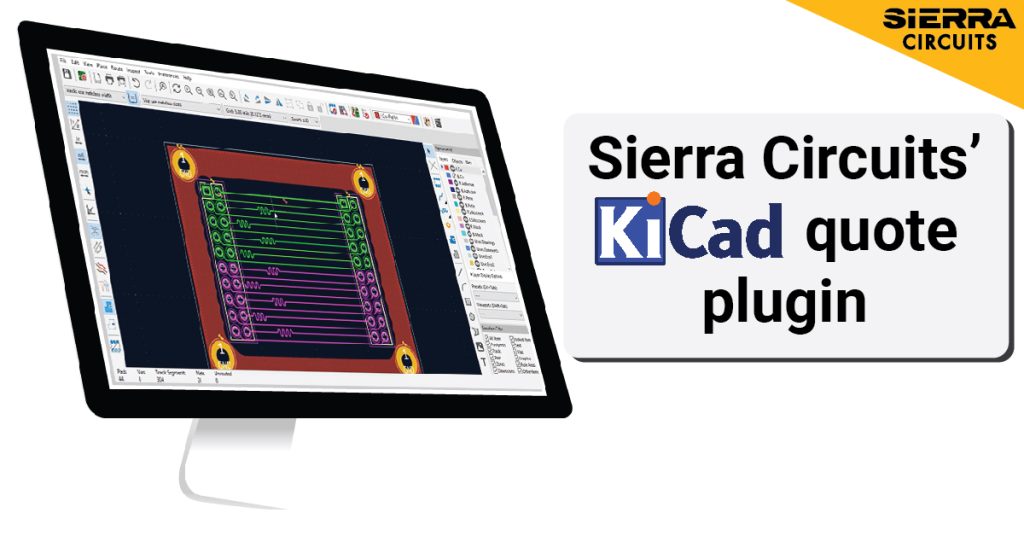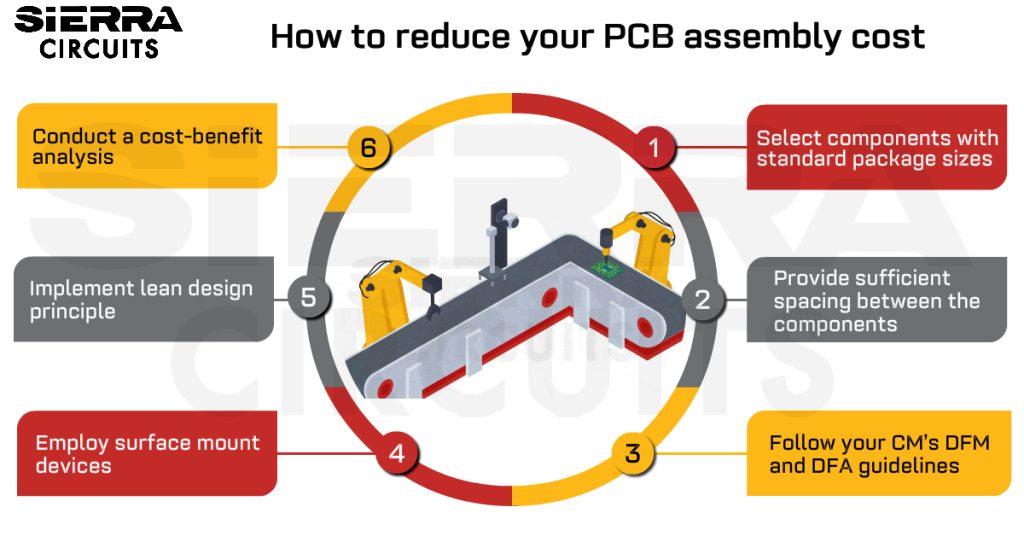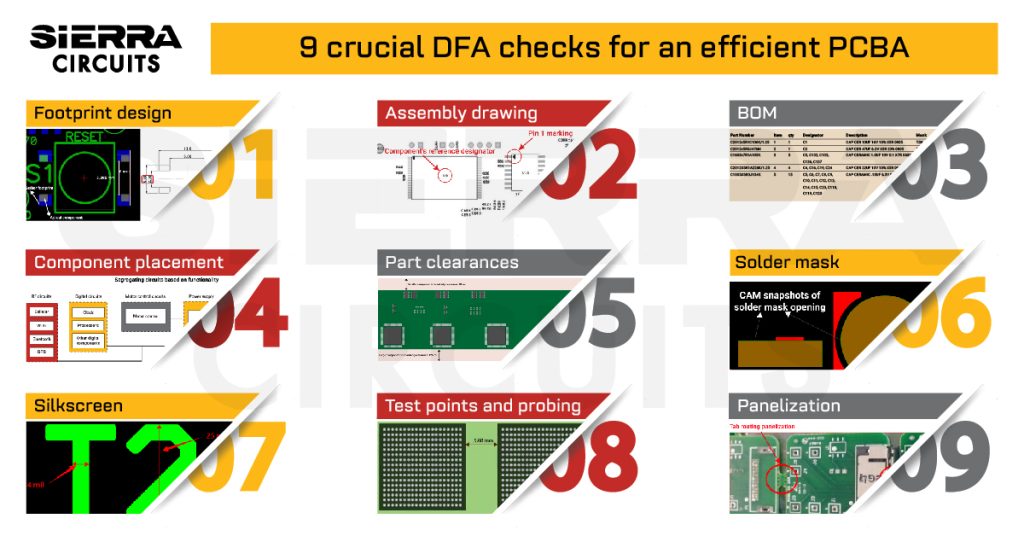Contents

On-demand webinar
How Good is My Shield? An Introduction to Transfer Impedance and Shielding Effectiveness
by Karen Burnham
Counterfeit electronic components pose a significant risk to various industries across the globe. These fake parts affect almost all sectors, including medical, automotive, consumer goods, networking, communication, space, and defense.
During manufacturing, these parts may go unnoticed, increasing failures, scrap, and rework rates. This impacts overall profitability and causes severe consequences in high-reliability applications. It is crucial to identify counterfeit electronic components by performing some industry-specific tests. Several norms and guidelines are issued for manufacturers and suppliers to establish and maintain product traceability. By adhering to all these practices, it is possible to produce authentic products.
Check out our PCB component sourcing and stocking services to get your electronics to market fast!
What are counterfeit electronic components?
Counterfeit electronic components are pseudo/unauthentic parts that are misrepresented in terms of their source or quality. Counterfeiting involves passing off low-quality components as high-quality by altering part numbers, repackaging, or mixing with better-quality parts.
Typical counterfeit components:
- Originate from an unauthorized source
- Are produced by unauthorized contractors and not by OCMs (original component manufacturers)
- Violate original OCM design, model, and performance specifications
- Are defective items sold as new
- Have incorrect documentation
Classes of counterfeit parts
The production, sourcing, and distribution of counterfeit components take many forms. We will discuss the classification of such parts below:

Replication/Cloning
Cloning is the process that involves the manufacturing of reverse-engineered equipment matching with the original in terms of fit, use, and structure. The products are manufactured with low-grade equipment. Hence, they will not meet the desired reliability requirements. These devices are labeled and distributed as OCM parts.
Scrapping
During manufacturing, defective devices are sent to recyclers to recover valuable metals. Recyclers can certify destruction without scrapping the equipment and later add them back to the supply chain.
Skimming
Skimming is a type of fraud that involves overproducing or declaring a low production yield. It leads to the sale of excess devices through broker chains.
Sample devices are put back in the supply chain
OEMs and OCMs test, qualify, and certify large quantities of devices. The end-of-life evaluation process includes acceleration testing to determine the performance and reliability of the product. Specimens/samples and stolen components can be sold back into the supply chain as brand-new products. Most scrap units may still work after scrapping, making them a principal target for fraudsters.
Recreation
High-performance parts require stringent testing for applications like automotive, space, avionics, etc. But fraudsters procure lower specifications components for these applications. Later, they re-mark and resell those parts at a high price. Printed circuit boards play a significant role in the automotive sector. See our post on automotive PCB: The chassis of the modern automotive industry for a better understanding.
Recovery and reuse
Many electronic appliances contain several working devices while scrapping. It is possible to recover valuable parts for reuse from these devices. The improper removal of components damages their original performance, reliability, and durability. Later, the supply chain markets these parts.
Embedded malicious software
Counterfeiters often reprogram some programmable devices that cause potential damage to products. This reprogramming is hazardous, especially in class 3 products such as military, aerospace boards, etc. It risks the safety and security of the system as well as its users. The malicious software hampers almost all the embedded servers, resulting in critical consequences.

IPC Class 3 Design Guide
8 Chapters - 23 Pages - 35 Minute ReadWhat's Inside:
- IPC guidelines for manufacturing defects
- IPC standards for assembly processes
- Common differences between the classes
- IPC documents to set the level of acceptance criteria
Download Now
How to identify fake electronic parts
Here, we will discuss several test methods that are available to identify fake electronic parts. Every manufacturer should employ such techniques to avoid the use of counterfeit parts.
Visual examination
Checking for counterfeits begins with a visual inspection. This involves checking the part number present on the component against shipping documentation. The validity of the date code is examined using the previous data and past products bought from the supplier. There are some other aspects of visual checking, which are as follows:
- Fraudsters use blacktopping to put a different part number and date code on the component. It involves applying a thin black epoxy coating on the top of the part and roughening the surface to achieve the desired texture. It also comprises matching the font with the original. To identify the presence of blacktopping, the top of the component and surface texture examination is important. Along with that, it is necessary to compare the manufacturer’s symbols with a known authentic product.
- The leads of the component should be checked for damage, re-tinning, etc. This is a part of the incoming inspection.
- Other factors to consider in a device are component orientation, general appearance, contact conditions, and inconsistencies visible to the naked eye.
Electrical testing
Electrical testing for counterfeit electronic components involves validation of resistance and capacitance values along with full-functional analysis of active parts. Various contract manufacturers (CM) and third-party test labs have facilities for conducting E-tests. For testing the complex product, expensive test setup and programming expertise are essential, which is only possible at OCM or some third-party labs.
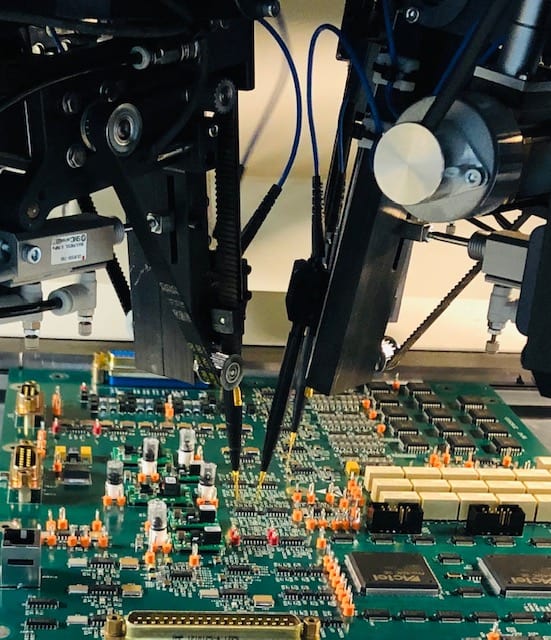
Electrical testing using flying probe tester
To learn more about E-test on populated boards, refer to our post on how flying probe testing works for PCB assembly.
X-ray inspection
X-ray inspection examines the hidden/internal properties of the component. Having a golden standard or a good known example is always beneficial for comparison. This method checks and verifies physical dimensions, lead frames, and bond wires. Moreover, it also examines all the components for any internal variations.
Inspections assure a defect-free product. See our post on the PCB assembly inspection report to gain insight into the various inspection tests performed on the board.
XRF technique
XRF stands for X-ray fluorescence spectroscopy. This technique determines the elemental composition of the materials and is best for verifying RoHS compliance.
Decapping
Decapping, also known as decapsulation, is the process that removes the protective cover of an IC for inspecting the micro-circuitry embedded on the underlying die. This method uses an acidic solution to etch an opening on the top of the plastic component to reveal internal semiconductor chips and bond wires. This allows for an accurate examination of photographic documentation, including fab line ID numbers and symbols.
Scanning acoustic microscope
Another method to discover blacktopping is a scanning acoustic microscope (SAM). This test locates laser etching underneath the blacktopping. If the etching is found, it is evident that resurfacing is done to cover the original marking. This method is non-destructive. Hence, if the component passes this test, it becomes usable.
Permanency marking test
This test investigates the resistance of part markings to solvents. For counterfeit detection, it is not a reliable test since most counterfeit markings are invisible to this process. This technique works well with ceramic semiconductors and checks whether a military-grade part marking complies with the standard. For more on mil-spec boards, refer to military-grade PCB design rules and considerations.
Scrap test
Nowadays, counterfeiters are becoming aware of the acetone method for revealing blacktopping. Therefore, they have started using a different material that is resistant to acetone. As a result, the scrap test was discovered. This process uses a sharp blade to scrape the surface. If it leaves a scar or burns on the surface without flaking (peeling or cracking), then the surface is considered authentic. However, if the flaking is visible, then the part is considered as remarked or reworked. In some cases, the previous marking also becomes noticeable on the component.
Read our post on common errors encountered in discrete components to avoid malfunctions that can occur during assembly.
What are the most common attributes to recognize counterfeit parts?
It is hard to recognize counterfeit parts as a whole. However, some common attributes will help us to distinguish between genuine and non-genuine parts.
Texture
The surface texture is a crucial factor for determining counterfeit components. The texture should be smooth and consistent. If it is rough and inconsistent, then it’s considered modified. Here is an example of laser burn and grain structure inconsistency in the marking.

Consistent vs. inconsistent surface texture

Comparison between good and reworked part number
Another thing to observe is the mold marks. Usually, mold marks should be smooth. But after alteration, they look grainy or contaminated.

Difference between smooth and grainy mold mark
Mold marks will not occur on all parts, and some of them may appear to be textured. It will depend on the manufacturer and the part number. There is one more factor that proves the resurfacing. Generally, the top and bottom parts of the component will have the same texture since they develop due to the coating or the molding of the organic material. But if it differs, then the component is said to be compromised.

Difference between the top and bottom surface texture
The high-magnification test inspects surface texture. Items are visible and easily recognizable during this inspection.
Marking
Observing the part marking is beneficial for identifying counterfeit electronic components in some instances. The quality of the original part marking will be good, but the quality of remarking will be poor. The logo also does not match the original standard.
Sometimes, the letters or digits repeat in part marking. Different fonts, irregular alignments, and variable sizes display indications of remarking. In the following image, the size of the two “C” is different, and the bottom line size is different than the other lines.

Part marking in counterfeit electronic components
Part remarking is also determined by comparing the samples having the same date code and lot code. The orientation of the part marking and bars is different in the following image.

Different orientation in part marking
Conditions of contact in counterfeit electronic parts
Conditions of the contacts are a significant factor in recognizing counterfeiting. The leads should be straight, and the distance between them should be equal. Observing the marks on the leads is essential to decide if they are the result of the normal tooling, insertion, or previous usage. Some flip chips consist of balls having test indentions formed as a result of factory testing. The packages having deformed balls signify re-balling. Additionally, scratches, contamination, irregular plating, and corrosion are the factors that show counterfeiting.
Generally, at the tips of the leads, there is a presence of copper where the lead was formed. If there is no presence of copper, then it shows the re-tinning.
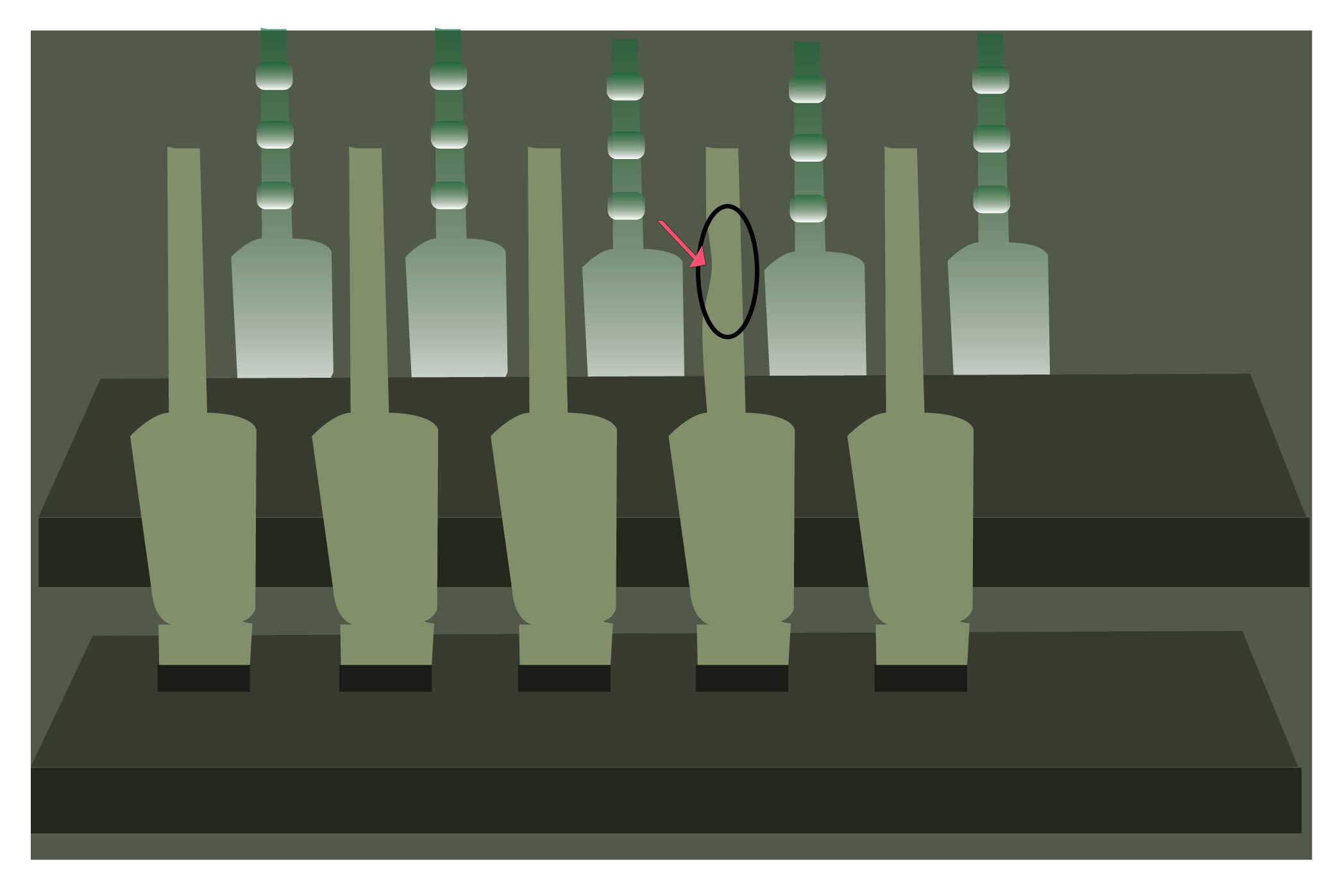
Disfigured lead

Condition of leads (corroded leads)
It is also possible to have damaged leads as a result of mishandling or shipping. In that case, those parts are not forged. There should be proper documentation to trace any such abnormalities occurring on the component.
Dimensions
Comparing the physical dimensions of the part with the datasheet specifications also detects counterfeit parts. This includes using a micrometer or other measuring instrument to check the dimensions. The thickness of the part will be discrepant with the datasheet due to reworking.
Blacktopping
Blacktopping refers to the coating that covers the area, which is removed by sanding or through any other method for employing a new part number. It is inspected by acetone test. If the acetone removes this coating, then the parts are said to be unauthentic. The following observations will indicate whether the part has been remarked:
- Change in the surface texture
- Irregularities
- Elimination of the black ink
- Visible previous markings
How to avoid counterfeit electronic components
It is crucial to find ways to avoid counterfeit electronic components as they impact the overall functionality of the product. In this section, we will discuss the measures to avoid them.
Ensure the integrity of the procurement sources
Buying parts from reliable sources reduces the risk of forgery. One way to ensure integrity is to buy the parts from original component manufacturers. It is unlikely to get a tampered component from them. Even then, it’s possible to choose a reliable OCM to get high-quality parts. Another option is to select authorized suppliers that are linked with OCMs. They guarantee efficient components.
Inspection of incoming quality
In-house quality inspection enhances counterfeit electronics detection capabilities and reduces the use of low-quality parts. Inspections should verify specs, identify duplication, and perform electrical tests to ensure the functionality of the parts. The use of random checks will reduce the number of fakes that make it into the board assembly line.
Collaboration with third parties
An easy way to avoid counterfeit components is to hire a third-party company to examine parts. The service will include a thorough inspection. However, hiring an outside company will incur additional costs. They should have a reliable quality management system in place that adheres to ISO 9001:2008. Furthermore, this company should be accessible and transparent about its processes and provide information and customer service.
Managing obsolescence
Implementing obsolescence management practices is another way to prevent counterfeit electronic components. The goal is to identify the outdated parts and design a plan to update equipment proactively. Whenever companies need an obsolete part, they turn to independent distributors. These unauthorized suppliers pose a higher risk of receiving counterfeit components. Obsolescence management helps companies eliminate fake parts and improve equipment efficiency.
If you have any further questions about the counterfeit electronic components, please let us know in the comments section. To understand PCB assembly aspects for a better design, download our design guide.

Design for Assembly Handbook
6 Chapters - 50 Pages - 70 Minute ReadWhat's Inside:
- Recommended layout for components
- Common PCB assembly defects
- Factors that impact the cost of the PCB assembly, including:
- Component packages
- Board assembly volumes





